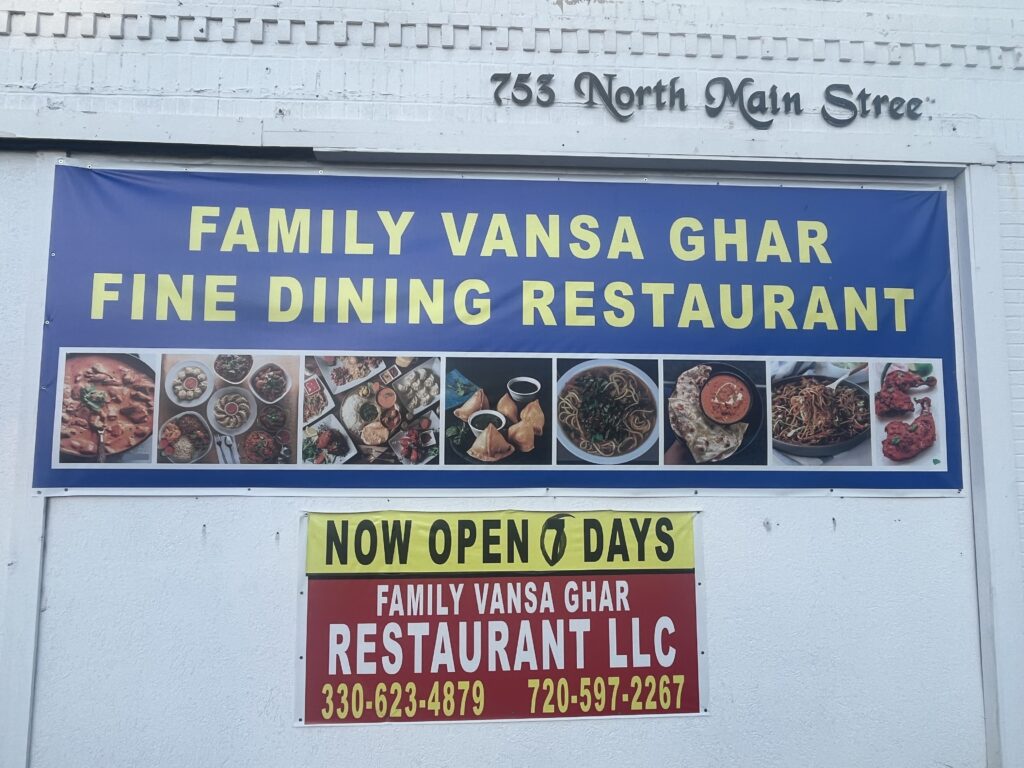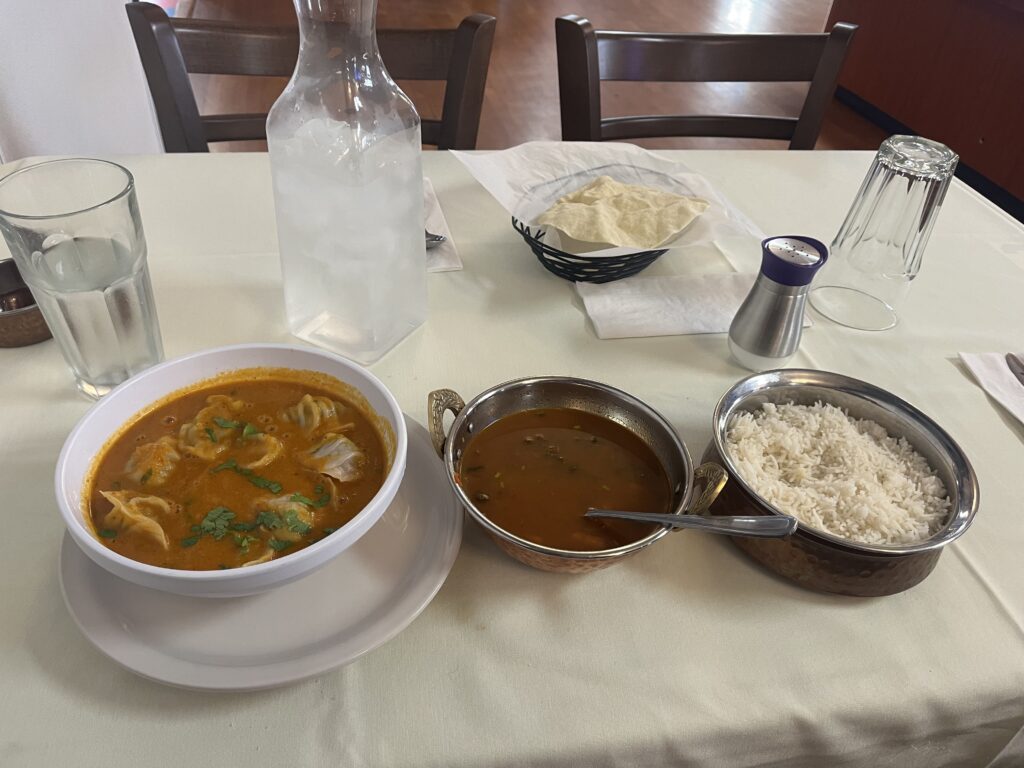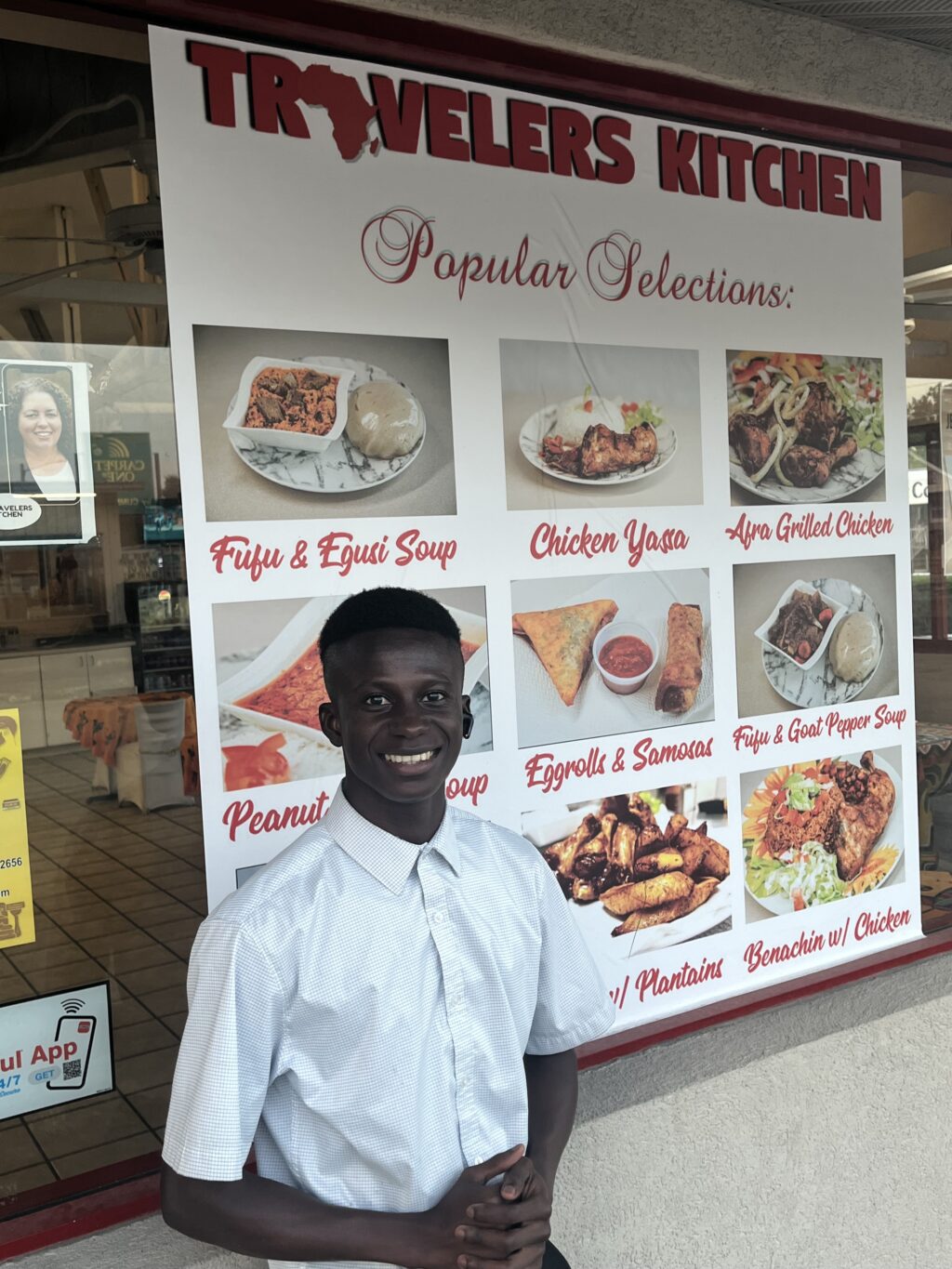Roadtrip: In search of the “statistically improbable restaurant”
...My heart's in Accra 2024-08-15
The first thing I do when I come to an unfamiliar city is look for where I want to eat. This is in part because I am a large man and eating is one of my primary pleasures in life. But looking for exciting food is one of the best ways to understand the past and future of a town.
If you come to visit Pittsfield, Massachusetts, you’ll find the usual chain restaurants and a number of red sauce Italian places. You might be surprised to find some very good Polish food, often in obscure little corners. My local orchard is planted with a wealth of sour cherry trees, which were particularly popular with the Polish immigrants to the area to make sour cherry brandy. You can get golumpki and other handmade Polish delights in the dairy case next to Vermont cheddar cheese and apple butter. I have no Polish heritage, but as a nod to the Polish cuisine all around, the breakfast buffet when Amy and I got married featured kielbasa and homemade kapusta, a wonderful fried sauerkraut. In other words, the Polish restaurants give you a clue to some of the migrant past in and around our town. So when I head into an unfamiliar city, I want to see whose cuisine is on offer, to see who I’m going to meet as well as what I want to eat.
Searching for restaurants gives me tips on neighborhoods that are being transformed by recent immigrants. When Amy and I passed through Lewiston, Maine earlier this summer, our first stop was the highest rated Somali restaurant. Not only did we have a delicious plate of food, but we also found ourselves at ground zero of the local Somali community. We were able to roam throughout the neighborhood they have made their own, visiting the grocery stores and import export shops. We were especially fascinated by the almost visible boundary between Somali Lewiston and Old Maine Lewiston at the public library, a reflection perhaps that integration of the Somali community has been a complex process.
When I look at the restaurants in an unfamiliar city, I’m looking for the statistically improbable restaurant. Here’s what I mean by that phrase: Early in Amazon’s evolution, they offered a clever feature to look at the contents of the book without giving readers full access to the text. One of the features they offered was “statistically improbable phrases”. A statistically probable phrase is a common one: “good morning”, “early afternoon”. A statistically probable phrase doesn’t tell you very much. It’s so common as to be almost meaningless. But a statistically improbable phrase can serve as a topic summar of a book. Amazon no longer offers this feature but SIPs of my book Mistrust would have included “global voices”, “digital cosmopolitanism” and other signatures of the ideas I was trying to share.
Let’s assume for the moment that most towns over 5,000 people have at least one Chinese restaurant. (Jenny 8 Lee’s Fortune Cookie Chronicles is a good introduction to this phenomenon.) The presence of a Chinese restaurant doesn’t tell you much about the demographics of a town, unless it’s specialized in Szechuan or Xian cooking, for example (in which case, you’re almost certainly in a big city.) Similarly, towns over 15,000 have a Thai restaurant, through a conscious government strategy of “gastrodiplomacy”. But if you encounter a Bosnian restaurant in a city of 50,000, it’s almost certain that there’s a significant local Bosnian population.
This trick isn’t that impressive in global cities like New York, Los Angeles or Houston, but for cities under a million, it can tell you a great deal about who’s come to town and who’s been in town. In my experience, restaurants are a trailing indicator while grocery stores are leading indicators. This makes sense: when people settle in an area they first need places to buy familiar food. Only once you’ve got a significant population of fellow immigrants to eat your cooking, or enough economic security that you’re willing to risk introducing your cuisine to your local community are most people able to open a restaurant.

Vansa Ghar restaurant in Akron, OH
When I passed through Akron a few days ago, there were several Nepali restaurants. Indian restaurants are pretty common in cities mid-sized and higher, but Nepali restaurants are pretty unusual. There are several in the Akron area, mostly clustered in northern suburbs of North Hill and Cuyoga Falls. I chose Family Vansa Ghar Restaurant & Bar, in part because the menu had some dishes I’ve never seen before. I ordered jhol momo, dumplings in a sour curry sauce, which was so delicious, I drank it after eating all the dumplings. The other was gundruk soup, which features fermented mustard leaves, which were chewy, tender and delicious, even as I was picking them out of my teeth.
As I enjoyed the food and the service of lovely folks who explained they had just opened the establishment, I read about the Nepali population in Akron. There are roughly 5,000 Nepalis in and around Akron. They are refugees, forced to flee Bhutan when the country often celebrated by westerners for its policy of gross national happiness decided to expel it’s entire Lhotshampa population, an ethnic group with origins in Nepal, but which made up a sixth of Bhutan’s population. The Lhotshampa had been in Bhutan since the 1600s, but were termed “migrant laborers” and sent “home” to a country they’d never lived in.
Alongside Columbus, OH, Erie, PA and Rochester, NY, Akron became a major resettlement site for Nepalis expelled from Bhutan. This article offers a good overview of some of the challenges the refugees face and the institutions that slowly are making it easier to be Nepali in Akron. The community in Akron is now so successful that Nepalis who settled in other US cities are moving to the city to build Nepali culture in northern Ohio.

It was two days ago, and I am still thinking about those jhol momos.
In my experience, towns transformed by refugees generally have three things going for them: inexpensive housing, a reliable local employer and a broader welcome from the city. Despite significant growth, Akron still has a relatively inexpensive housing supply – it’s at 2.8x median income to median house price, tied with Utica, NY, which has become a mecca for Bosnian, Rohingya and Somali refugees. In Utica, there’s a lot of multi-family units – you buy a building, live in half and rent the other to fellow refugees – I would not be surprised to see something similar at work in Akron. The employer of choice seems to be Gojo, the cleaning products company, which has a factory in Akron with jobs for people without much English. And Akron seems to be a welcoming place – North Hill, where the restaurant was located, seems to be a mix of Nepali businesses and Akron residents who are looking to do something experimental or out of the ordinary.

Fine food from The Gambia in Springfield, IL
I’m always on the lookout for the statistically improbable restaurant – I hope to build a map sometime using data from Yelp or Google. But in the meantime, I simply keep my eyes peeled. In Youngstown, killing time while seeing if I could find a replacement wheel, I found a massive flea and farm market on the edge of town. In the very back of the main building was a small Haitian restaurant, closed, but I hope to visit sometime soon. Tonight’s dinner was at Traveler’s Kitchen in Springfield IL, which featured dishes from around west Africa. As I ate my jollof rice and peanut soup, I talked with the server, who is from The Gambia and proudly told me that there are 40 Gambians in Springfield, most students at University of Illinois – Springfield. The young man is getting his masters in public health, hoping to go on to the PhD, and in the meantime, sharing Gambian and West African food with anyone lucky enough to find the place.
Look for your statistically improbable restaurants. It’s statistically likely that the food is great and you’ll learn something about the people who share your city.
The trip so far: Driving by Data Set By the numbers: What statistics can and can’t tell you about undervalued cities A Square Deal in Binghamton Buried, with dignity, in Elmira Side Quest in northern Ohio
The post Roadtrip: In search of the “statistically improbable restaurant” appeared first on Ethan Zuckerman.